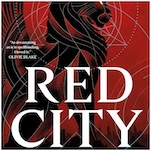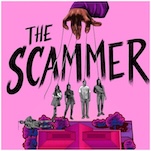Hacking ModCloth: A Look Behind the Online Powerhouse
In an age of endless options and an infinite stream of consumer buying power, clothing is something that offers the most versatility, but finding a budget-friendly style that accompanies a clean conscience is tough. The latest plague sweeping the planet has found its roots in fast fashion, where the manufacturer of a 20-dollar dress is literally paid pennies to deliver high-quantity/low-quality in-demand pieces. In essence, staying style-conscious without breaking the bank and maintaining ethical responsibility has become a lost art. The Rana Plaza garment-factory building collapsing in Bangladesh 2 years ago was a wake-up call, but the lengths we have to trek in order to don inexpensive clothing that isn’t risking the lives of factory workers is becoming an all-too-literal life or death situation. Though the options for affordable, on-trend garments are nice, the ethical concern to this global demand begs the question: what exactly is our responsibility as fashion admirers?
Once upon a time, people would get their clothing from department stores, which received its inventory from manufacturers. Fast forward to 2015 and retailers are manufacturing clothing themselves, giving them direct control over the manufacturing and distribution process from start to finish. This has opened the door to fast fashion giants such as H&M, Forever 21 and Zara. A relentless thirst for trend-centric, new and fast products characterized the industry, backed by broke fashion students from Boca to Bangkok.

Powerhouses like H&M have become so fast, they can design, manufacture and get clothing into stores in under a month, and, with the e-commerce explosion, can now access up-to-the-minute arrivals for various brands online. In turn, we have become conditioned to expect a constant flow of options and styles at the click of a button. Don’t get me wrong, it’s beautiful to see kids without a constant cash flow be able to access new levels of style, but the trajectory of making that accessible is damaging to not just our spending habits, but any remaining attempt at regaining authenticity and integrity in fashion. Though fast fashion empires such as Forever 21 know they sell stolen designs and patterns in the form of wearable cheaply-produced textiles, ModCloth is one company that attempts to take a different track on the fashion express.
Upon recently perusing through ModCloth’s website, I found a slew of cute, on-trend and relatively unique pieces sourced from different designers and manufacturers all over the world. After a quick Google search on some of the brands, it’s easy to see that the vast majority of ModCloth’s inventory is from a wholesale factory, occasionally marked up once it reaches ModCloth territory, but sometimes, surprisingly discounted. ModCloth’s modus operandi is to aggregate an endless stream of unique manufacturers and sell it to you in a curated online boutique format, omitting any doubts as to whether or not your sequin ensemble was sewn together by a 7-year-old. Though it’s not entirely clear whether they are propelling the unjust factory-worker agenda for profit, its multi-million competitors such as H&M seem to forego any ethical concern while pushing inflated products before strategically selling each piece to you, the consumer, on a polyester platter while keeping their brand, and audience, in control. In exchange for our vapid quest towards being “on trend” (whatever that means today), these “democratized” clothiers are making bank producing cheap clothing for the girls of the modern world that are crazy enough to spend $84 on a pleather bibb.

-

-

-

-

-

-

-

-

-

-

-

-

-

-

-

-

-

-

-

-

-

-

-

-

-

-

-

-

-

-

-

-

-

-

-

-

-

-

-

-










































